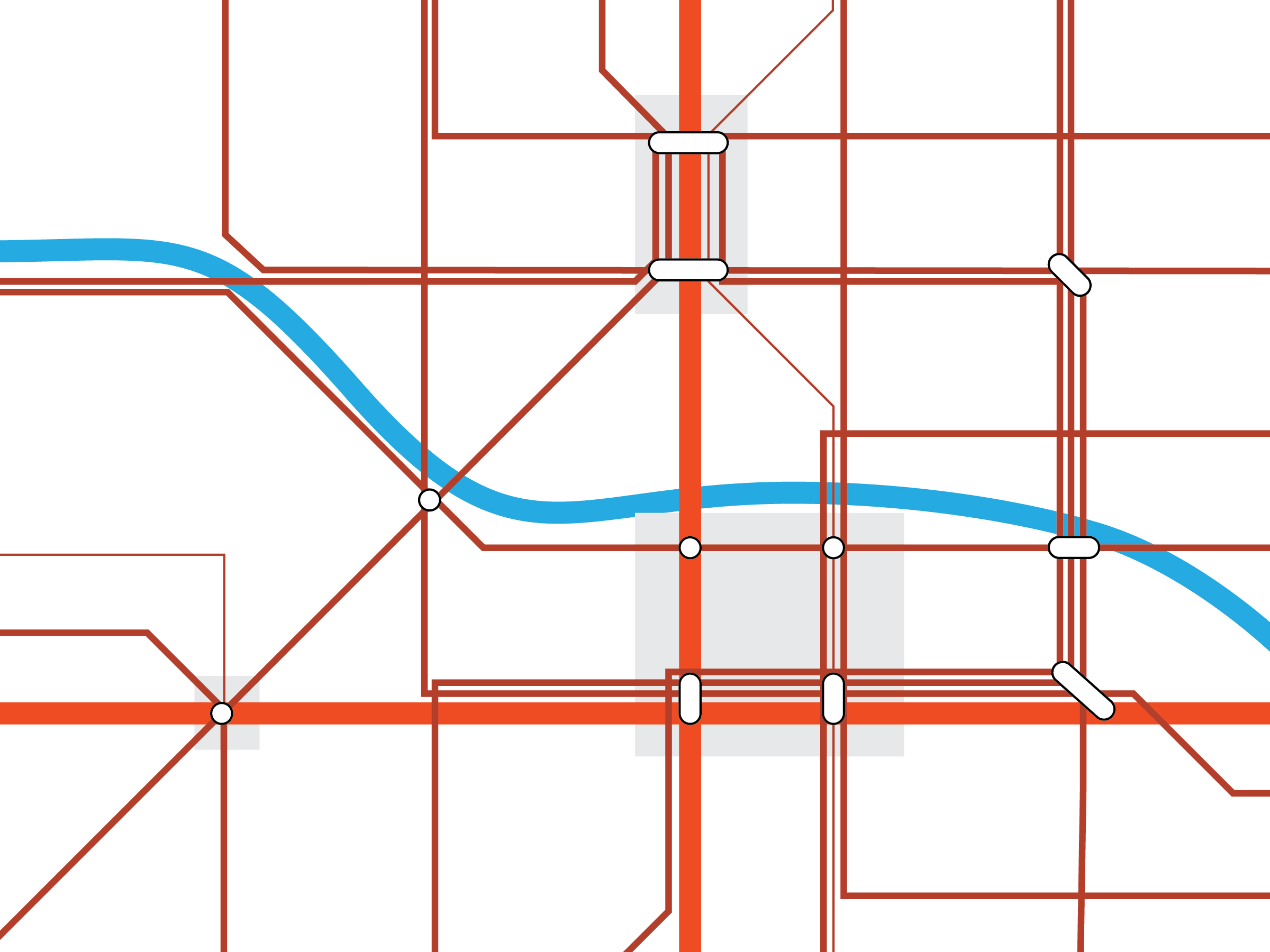
Cities with extensive off-street rail networks often plan surface transit as a feeder to rail. Bus routes originate and terminate at rail stations.
Operations in these systems strongly favor the trunklines, resulting in frequent or high-volume bi-directional service along these routes but much less frequent service to other locations.
Trunklines connect key hubs, making travel between dense centers quick and simple.
When buses are used for trunkline routes, robust rapid transit street design includes transitways and station-area planning.
Local routes on neighborhood streets benefit from comfortable stops, system information and branding, and other integration with the broader system.
APPLICATION
Cities with both buses and a dedicated-right-of-way rail system have historically structured the former primarily as a feeder service to the latter. Bus Rapid Transit can be used to upgrade new parts of the network into trunklines. At somewhat lower speeds and distances, streetcars and buses can also form a multi-hub network, with dedicated lanes or transitways in downtown.
Cities with multiple large economic or activity clusters require connectivity beyond downtown. Lower-density neighborhoods and activity centers often access core rail service via feeder surface transit.
BENEFITS & CONSIDERATIONS
Prominent stations can be major attractors for ridership and transit-oriented development activity. Keeping transfer points compact and walking-oriented is key to their development potential.
With targeted investments, surface bus networks may provide substantially faster travel for specific routes, even in systems with separate off-street transit. Bus networks are often simpler and less expensive to plan and build.
Service frequency, and subsequent investments, can be imbalanced toward rail, especially when the rail network is well established.
GUIDANCE
Because transfers are key to an effective network, the transfer process should be as simple and seamless as possible. Design transit hubs to be simple to navigate, and implement transfer-supportive fare payment methods.
Design rapid network to run primarily on either large streets with dedicated transit lanes or on other streets where reliable service can be provided.